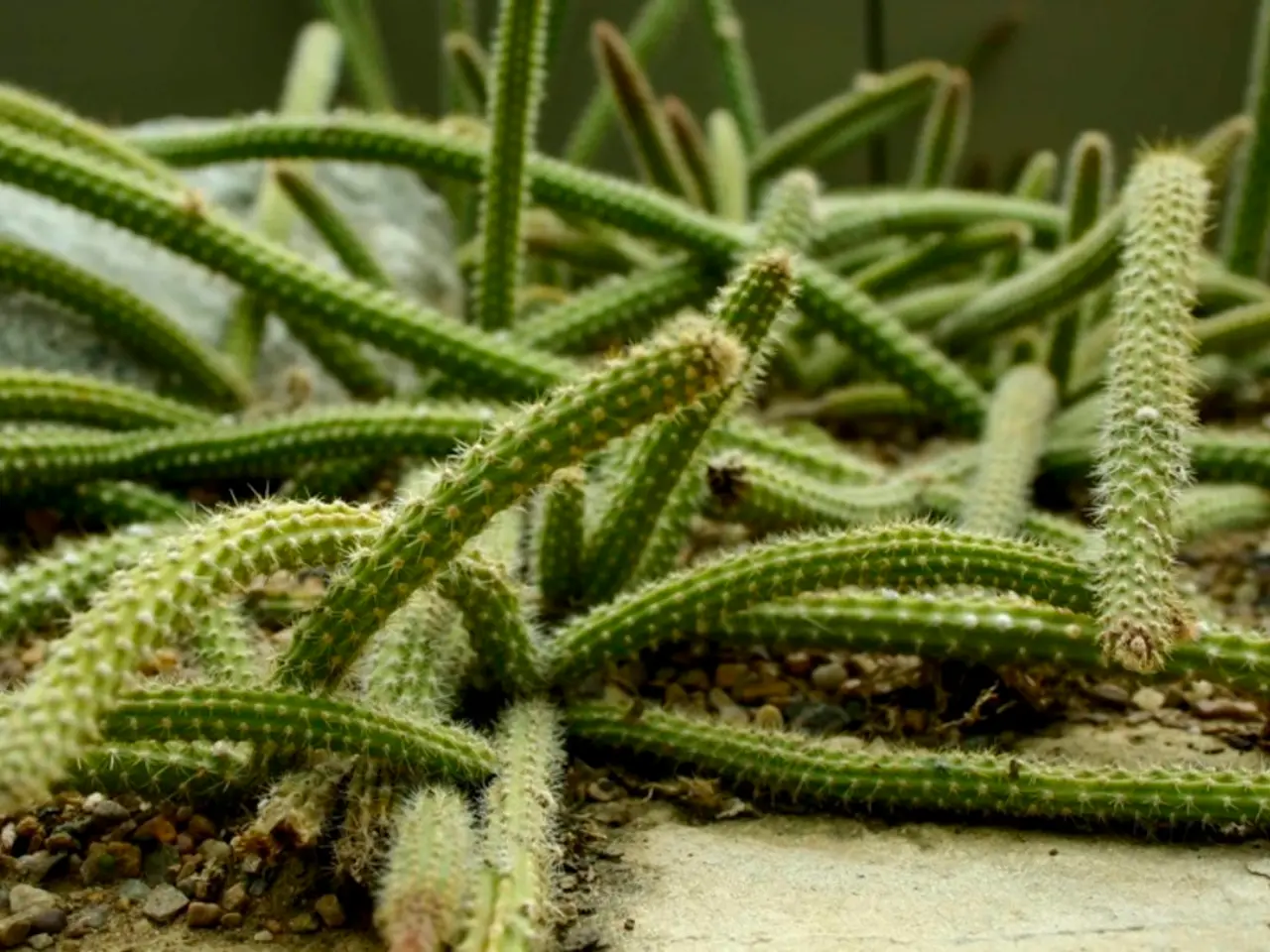Cactus Maintenance Guide
In the world of cacti and succulents, keeping these plants healthy and thriving often requires addressing common pests and diseases. This article will provide you with a practical guide on identifying and treating issues such as mealybugs, nematodes, scale, and rots.
Identification
When it comes to spotting pests and diseases in your cacti and succulents, here's what to look out for:
- Mealybugs: These tiny, cottony or waxy clusters can be found on stems, leaves, or roots, sometimes appearing as tiny white fuzzy spots. They often hide in crevices or at the base of leaves.
- Nematodes: These microscopic roundworms usually attack roots, causing root damage and weakening the plant. Signs include poor growth and wilt despite adequate watering.
- Scale insects: These small, hard, rounded or oval bumps can be found on stems and leaves. They can be brown, gray, or white and are often immobile.
- Rots (fungal or bacterial): Indicated by soft, mushy, discolored areas on stem bases or roots with possible foul odor, often caused by overwatering or poor drainage.
Treatment
| Pest/Disease | Identification | Treatment | |---------------|--------------------------------------------------------|-------------------------------------------------------------| | Mealybugs | White cottony masses on plant parts | Dab affected areas with 70% isopropyl alcohol on a Q-tip; apply insecticidal soap to break down their protective coating; repeat treatments as needed; introduce beneficial predators like ladybugs if possible. | | Nematodes | Root damage, weak plant growth | Treat soil with beneficial nematodes to biologically control larvae; alternatively soak plants in 50°C water for 15-20 minutes to kill nematodes; chemical nematicides are also effective but require caution. | | Scale | Hard, immobile bumps on stems and leaves | Scrape off manually if possible; apply horticultural oils or insecticidal soap to suffocate insects; repeat treatment over weeks to catch new hatchlings; use beneficial insects if available. | | Rots | Soft, mushy, discolored areas on stems/roots | Remove affected tissue with sterile tools; improve drainage and reduce watering; apply fungicides if necessary; isolate infected plants to prevent spread. |
Additional Notes
- For chemical or biological treatments, repeat applications may be necessary to fully eradicate pests.
- Improving environmental conditions (light, watering, airflow, and soil drainage) is crucial in preventing both pest infestations and rots.
- Monitor plants regularly to catch early signs of infestation or disease for prompt treatment.
- If unsure about diagnosis, bring affected plant samples to local extension services or use expert online help for accurate identification.
When it comes to chemical or biological treatments, it's essential to read the label carefully before use. Rots can be aggravated by improper watering, forcing growth during periods of dormancy, and wounding plants when repotting. Unless the plant is special, it may need to be discarded if affected by rot.
Choosing the correct type of soil is essential for the survival of cactus or succulent plants. Nematodes can be addressed by removing all soil from the roots and repotting using pasteurized soil or a mix. Cacti and succulents can be afflicted by pests such as mealybugs, nematodes, and scale.
To save a plant affected by rot, cut out and remove material one-half inch beyond the area that looks decayed. Keep the treated plant in an area of low humidity until it recovers.
- Maintaining the health of cacti and succulents in a home-and-garden setting demands attention to their lifestyle, particularly when it comes to common pests such as mealybugs, nematodes, scale, and rots.
- In the process of gardening, chose the correct type of soil for cactus or succulent plants to ensure their survival and thrive in a home-and-garden environment.




